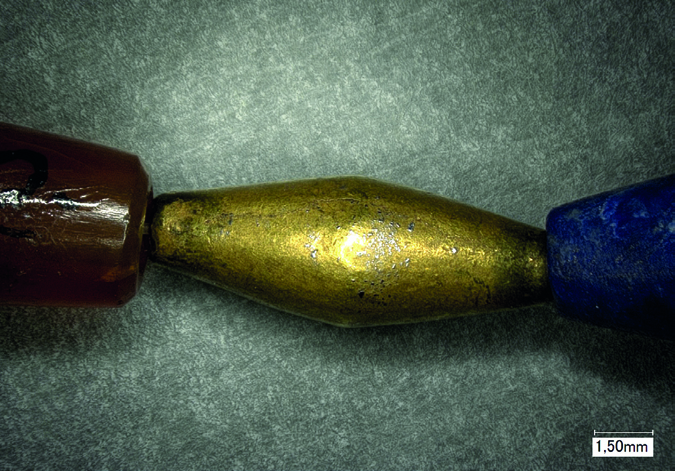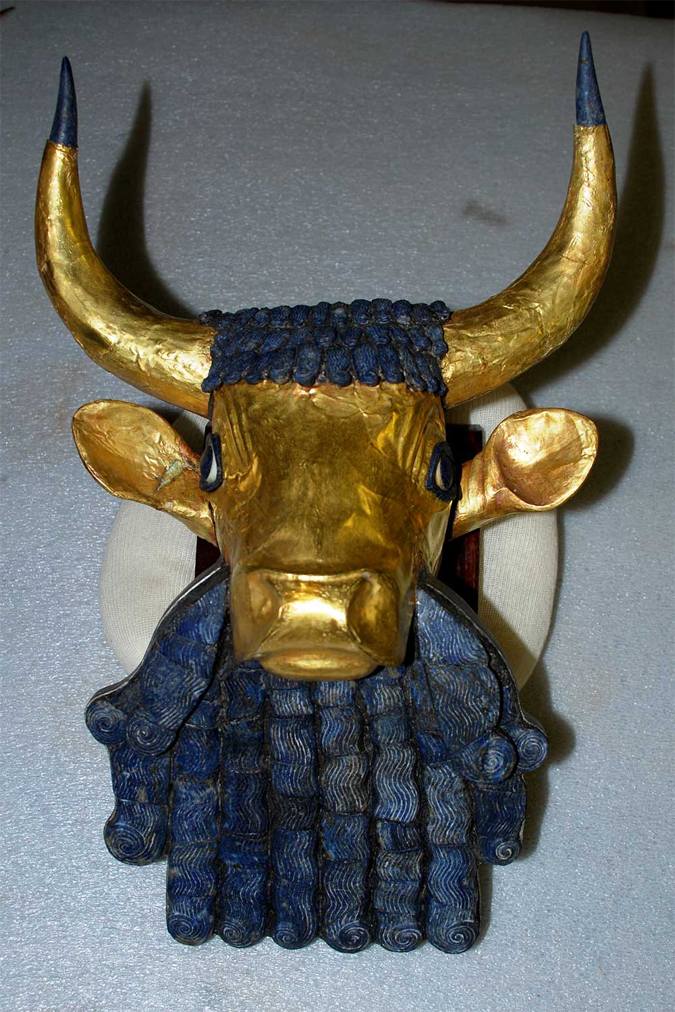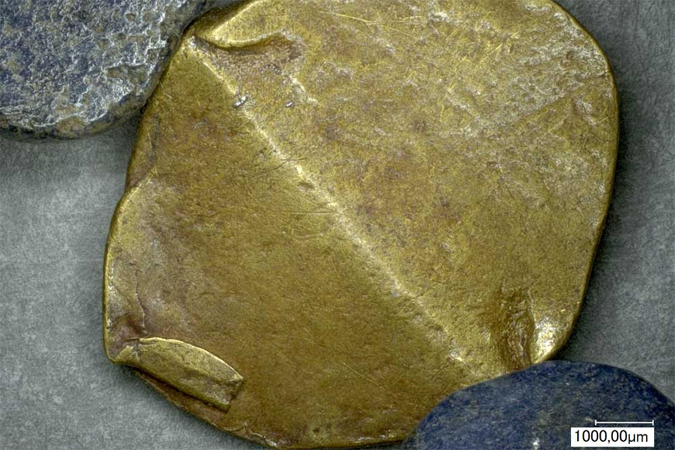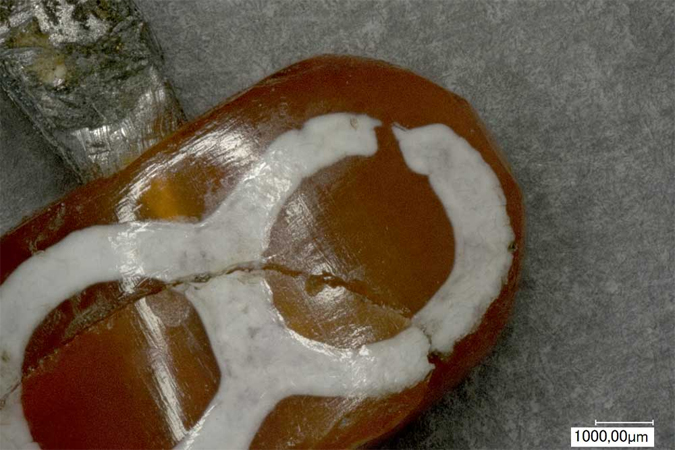Studies of Gold Objects from the Royal Tombs of Ur
Contact: Prof. Dr. Andreas Hauptmann
andreas.hauptmann@bergbaumuseum.de

The Pennsylvania University Museum for Archaeology and Anthropology in Philadelphia (Penn Museum) has a large collection of metal artefacts made of copper, bronze, silver and gold, which Sir Leonard Woolley had excavated from the royal tombs of Ur (middle of the 3rd millennium) between 1922 and 1934. Of the finds, one quarter of them went to the Penn Museum, another quarter to the British Museum in London, and the remaining half were sent to the Baghdad Museum. Before the first Gulf War in 1991 these objects were moved to the vault of the National Bank, along with many other gold artefacts, and they have recently been “rediscovered” there.

Fig. 02 : This bull’s head from the “King’s Grave” was attached to a lyre as decoration. The face consists of gold and lapislazuli, the eyes are inlaid with shells, and decorated with bitumen.
Analytical Examinations of Metal Finds
The DBM’s work on the artefacts first began in 2009. The museum agreed to a request to carry out analytical examinations of the metal finds. To begin, 31 of the best known and most beautiful gold objects were analysed non-destructively with a portable x-ray fluorescence spectrometer to determine their chemical composition.

Fig. 03: Numerous beads were recovered from the royal graves. Many of them are typed as golden “butterfly beads”. They were made of two pieces of gold foil welded together. This image was recorded in the Penn Museum with a transportable digital microscope from Keyence.
Very Interesting Results
The measurements produced through portable x-ray fluorescence was very interesting. Of particular interest was evidence of gilding using a tumbaga alloy, which “simulates” a golden appearance, i.e. it is used to create a gold-rich surface layer through treating the original copper-silver-gold alloys with acids. This ingenious technique therefore, was not invented in South America in the 15th century AD, as previously assumed, but was already known in the ancient world around 2500 BC. These preliminary studies gave rise to a DBM research project with several partners. Following an offer to extend the analyses to the finds in the British Museum, a continuation of the current project is under consideration.

Fig. 04: Often etched Carnelian beads, probably from the Indus valley, were found in the royal graves as well. The inlaid white enamel stands out from the red bead creating an attractive effect. This image was recorded with a digital microscope.
